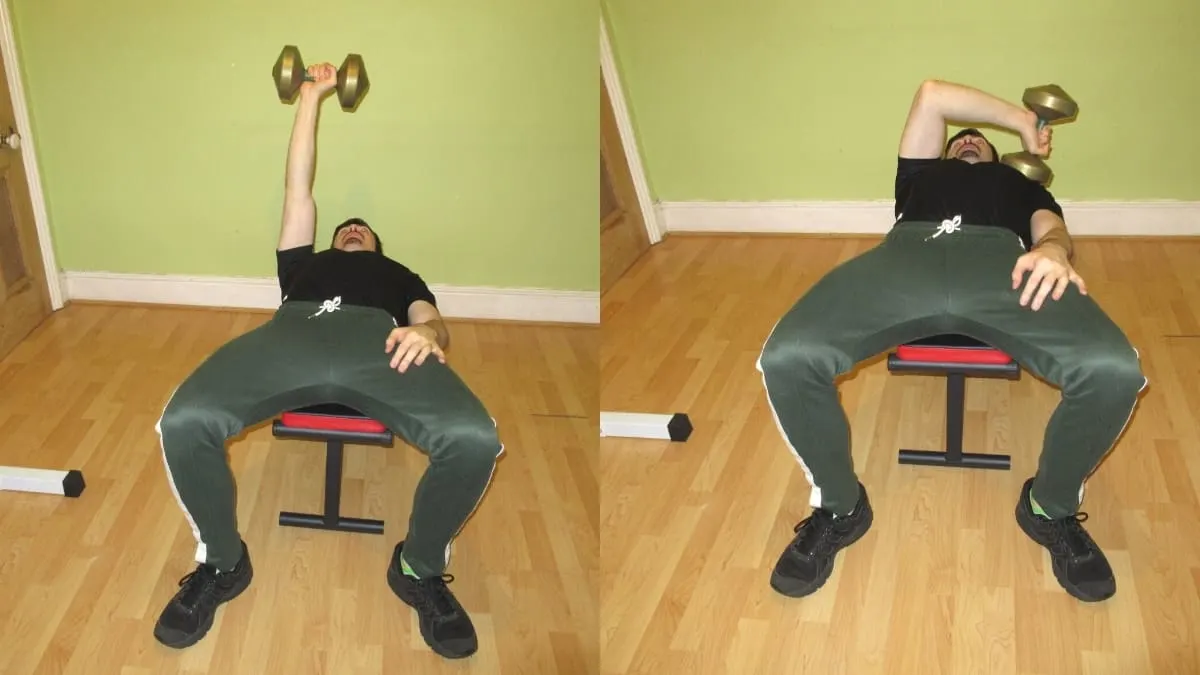If you want to develop tricep muscles that are symmetrical as well as big and muscular, then there are few better exercises than the cross body tricep extension.
The cross body dumbbell tricep extension is a variation of the one arm lying tricep extension.
The difference is that, rather than lowering the weight to your face or behind your head, you’re going to turn your arm in and lower the weight to your clavicle area (i.e., across your body).
If you don’t want to use free weights, then you can also do a cable horizontal tricep extension. This exercise has the exact same lifting motion as the dumbbell version, except that you’re performing it in a standing position.
Related: Cable cross tricep extension
Cross body tricep extension exercise details
- Main Muscles: Triceps
- Exercise Type: Strength
- Exercise Mechanics: Isolation
- Difficulty Level: Beginner
- Equipment Needed: Dumbbell, bench
How to do a cross body tricep extension
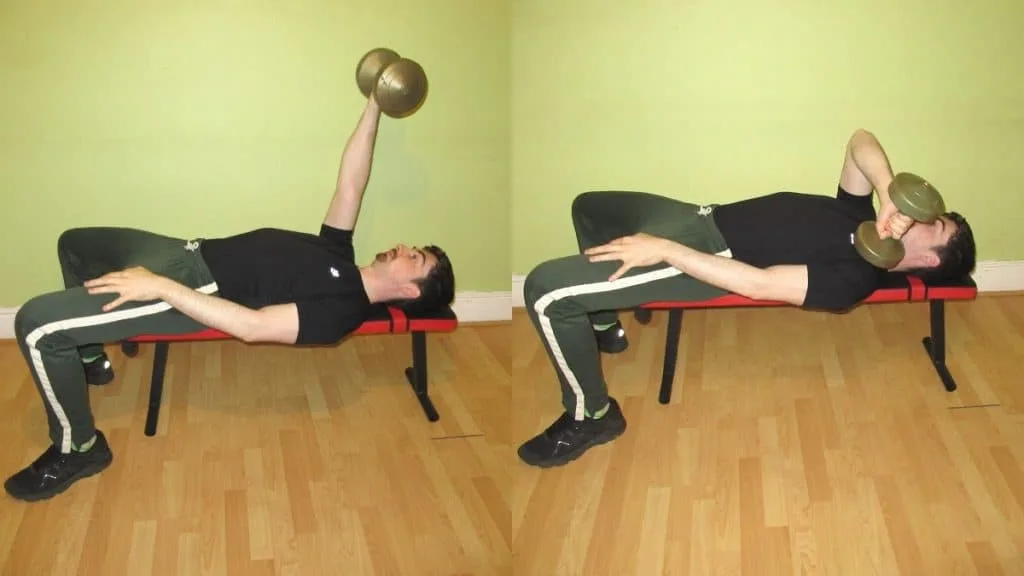
- Grab a relatively light dumbbell and lie on a flat bench.
- Press the weight up and then rotate your arm inward so that your elbow is pointing out to the side.
- While keeping your shoulder still, bend your elbow to lower the weight toward your clavicle area in a controlled manner.
- Keep going until you feel a strong stretch in your triceps.
- Reverse the movement by flexing your triceps until your arm is locked out.
- Repeat for 3-5 sets of 8-20 reps.
Cross body tricep extension variations
In addition to doing the kettlebell tricep press and the banded tricep extension in a cross-body fashion, you can do the one arm cross body tricep extension in a variety of positions.
Incline lying cross body DB tricep extensions
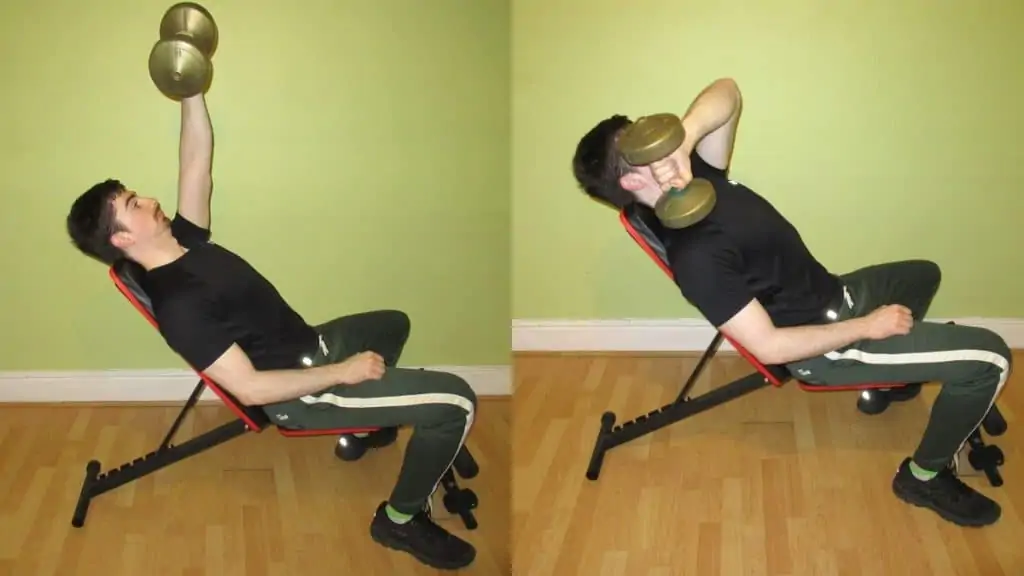
Doing an incline lying tricep extension in a cross body fashion offers virtually identical benefits to the flat bench version—excellent triceps isolation, simple setup and execution, equal amounts of work for both arms.
The only difference is the angle of the bench, which, since you’re not lowering the weight behind your head or to your face, has no influence on triceps activation.
So while the incline variation is certainly a good exercise, it offers no advantage over the flat bench version unless, of course, you plan on supersetting it with incline curls, in which case the incline option would be more convenient.
Decline lying DB cross body tricep extensions
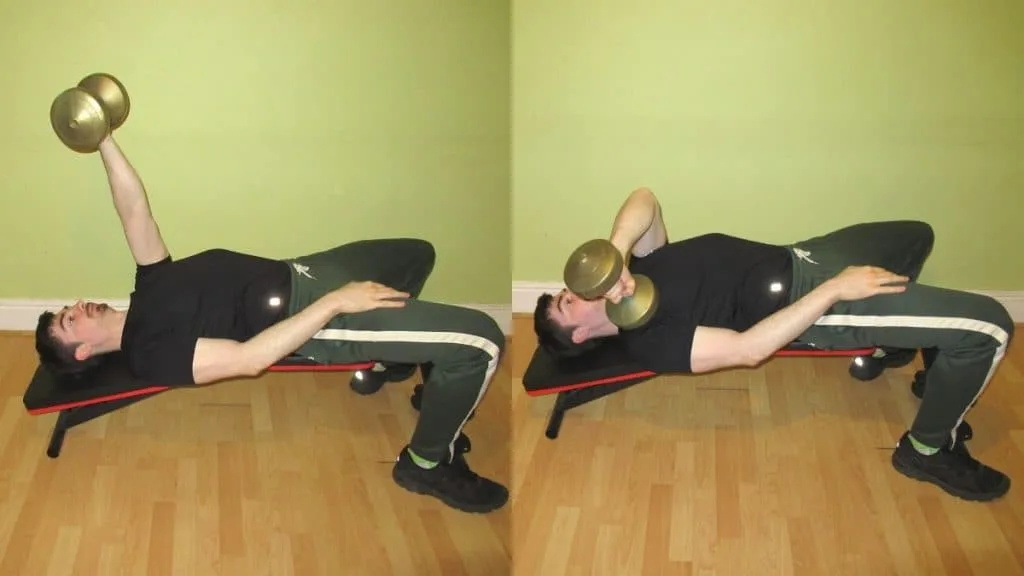
Performing the cross body decline lying triceps extension puts your triceps at a greater pre-stretch than the flat and incline versions due to the sloping angle of the bench.
Considering that the eccentric part of the rep is, if anything, more important than the concentric portion for stimulating hypertrophy, any exercise that enhances the eccentric stretch at no detriment to you is well worth performing.
Also, since you’re only lifting one dumbbell, it’s not like you need a special decline bench with foot holders to keep your body stable; any bench with a decline setting will do just fine for this exercise.
Floor cross body dumbbell tricep extension
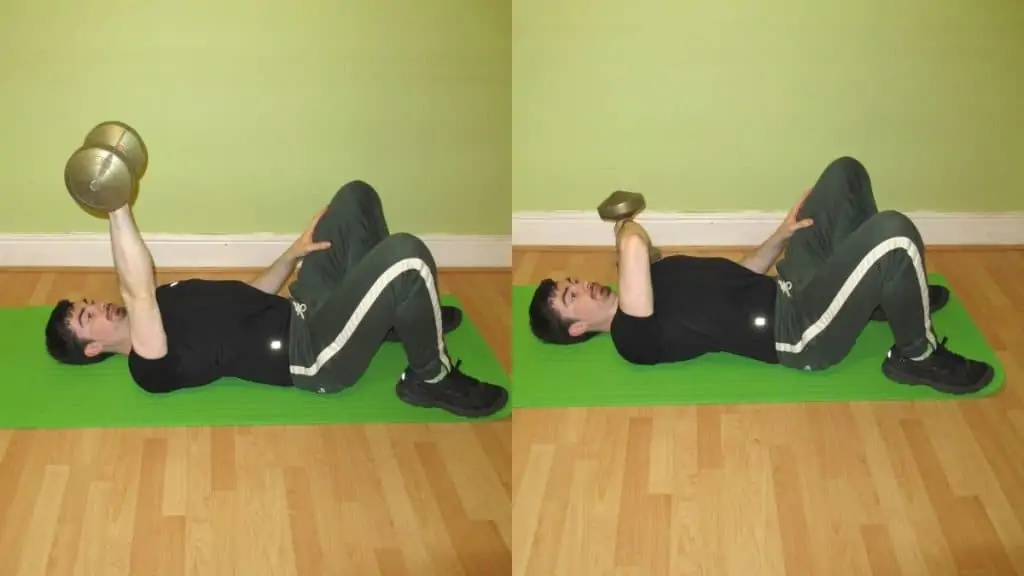
Performing cross body floor DB tricep extensions is ideal if you’re training at home and don’t have access to much equipment.
Although having an exercise mat would be ideal (it’d certainly make you more comfortable), all you need to perform the cross body floor tricep extension is a single dumbbell.
With just one weight, you can ensure that both of your triceps muscles are getting equal amounts of work, which in turn helps your upper arms to look more proportional and aesthetic.
Alternating cross body triceps extension

Doing dumbbell alternating lying tricep extensions in a cross body fashion is an effective way to work both of your arms quickly.
In other words, you don’t have to double the number of sets because you’re not training completely unilaterally; you doing a rep with one arm followed immediately by a rep with your other arm.
The downside of this variation is that you’ll need access to two dumbbells of the same weight, which, depending on your equipment availability, may or may not be feasible.
On the positive side, because you’re training in an alternating fashion, each of your triceps gets a short rest while the other is working, which enables you to perform more reps on each set.
Is doing tricep extensions across your body safe and effective?
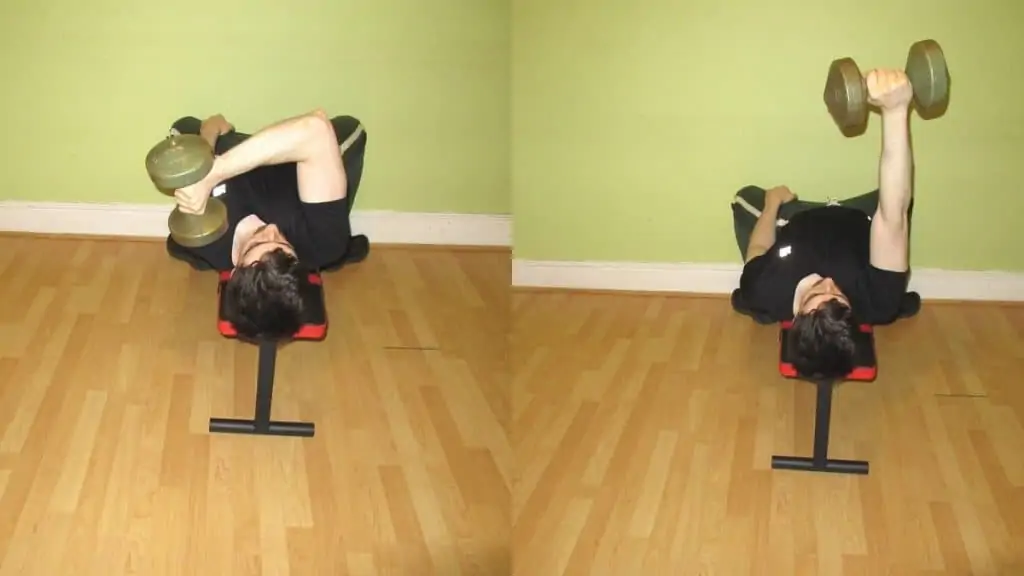
The cross-body unilateral triceps extension is certainly effective for building muscle because it completely isolates your triceps and equalizes the amount of work that each arm receives.
The problem is that the exercise puts the glenohumeral joint (i.e., your shoulder) into extreme internal rotation, which could hurt your rotator cuffs, even if they are only used as stabilizer muscles in this elbow extension exercise.
Additionally, because of the internal rotation, you’re forced to lower the weight to your clavicle area if you want to use a straight lifting motion. Lowering any amount of resistance to this area of your body isn’t a good idea because you don’t want to drop the weight on your neck or chest.
For this reason, most people are better off doing a lying tricep press with dumbbells where the weights are lowered behind the head. If anything, bringing the dumbbell behind your head will put the long head of your triceps (the biggest head) under a more substantial eccentric stretch, which in turn leads to a more robust hypertrophic stimulus.
Read More: Tricep cable concentration extension
Conclusion
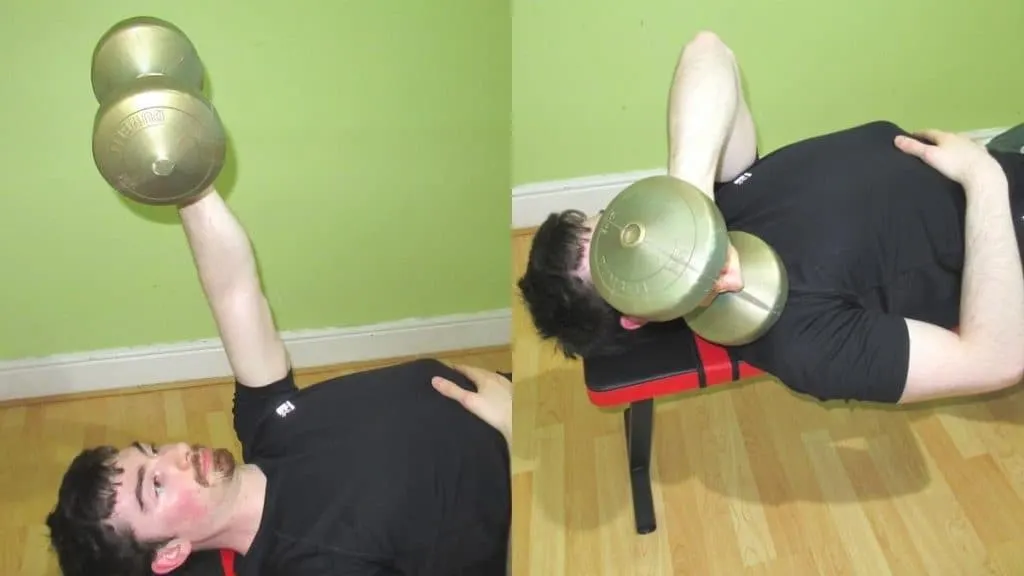
The lying cross body tricep extension is an effective exercise for building proportional triceps because by training each arm separately, you can make sure that both of your triceps are receiving equal amounts of work.
Additionally, the single arm cross body tricep extension requires minimal equipment to perform, which makes it a great choice for those who work out at home.
The only real drawback is that the movement necessitates having your shoulder is what is essentially maximum internal rotation.
While this positioning shouldn’t be a problem for most people theoretically (the exercise doesn’t load the shoulder directly, it loads the elbow), it can still cause rotator cuff discomfort for some people. If this is the case for you, keep your shoulder in a neutral position and lower the weight straight up and down rather than across your body.

